A ball of barnacles wins wildlife photo award
- Published

An incredible image of a football covered in goose barnacles is the winner of this year's British Wildlife Photography Awards.
The picture was chosen from more than 14,000 entries by both amateur and professional photographers.
The photograph, which also won the Coast and Marine category, was taken by Ryan Stalker.
"Above the water is just a football. But below the waterline is a colony of creatures. The football was washed up in Dorset after making a huge ocean journey across the Atlantic," says Stalker.
"More rubbish in the sea could increase the risk of more creatures making it to our shores and becoming invasive species."
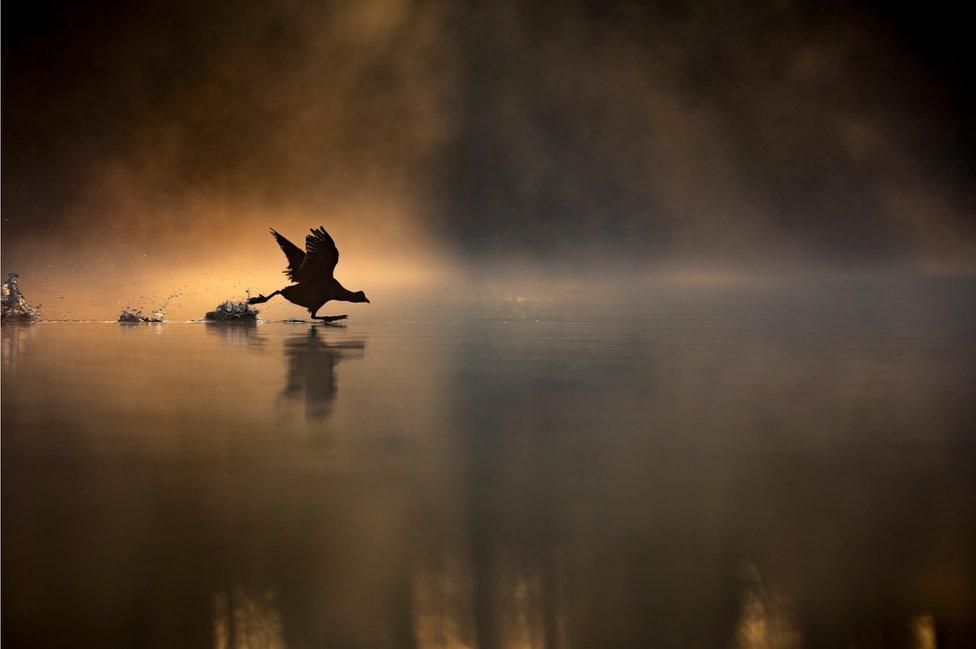
Max Wood won the RSPB Young British Wildlife Photographer of the Year award for his image of a coot running across a misty lake at sunrise. This award is supported by the Royal Society for the Protection of Birds (RSPB) to encourage young people to get involved with nature.
Photographers competed in different categories, here are the other winners.
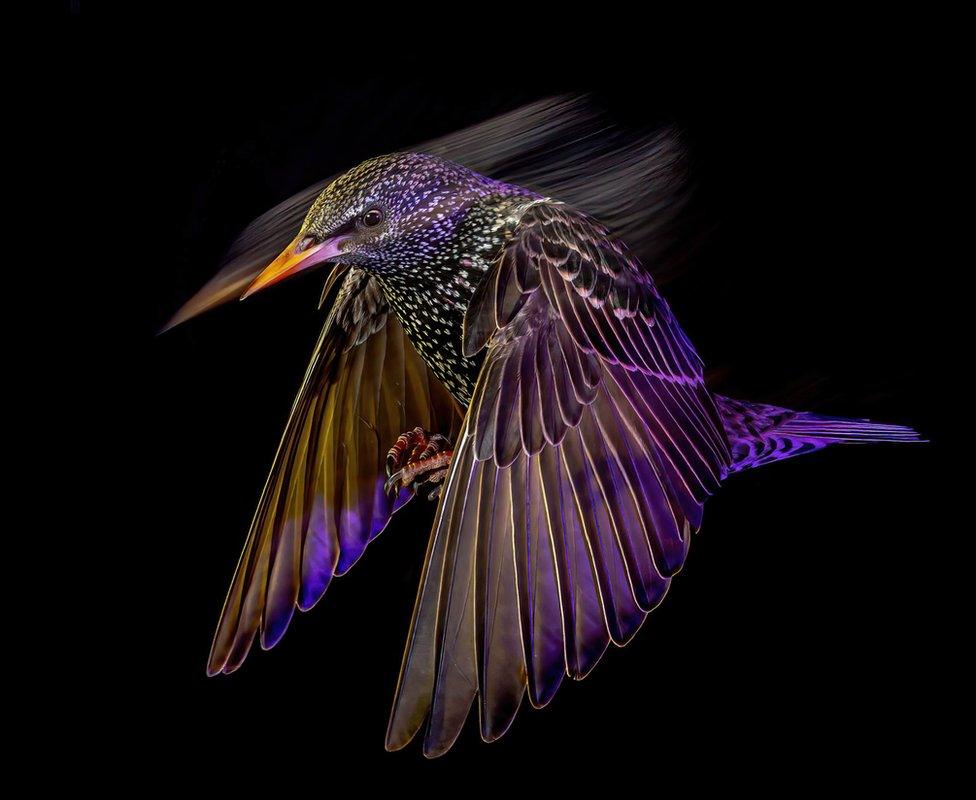
Mark Williams won the Animal Portraits category with this picture of a common starling (Sturnus vulgaris).
"I had been observing the birds in my garden as they fed on sunflower seeds and peanuts from the feeder for some time. I aimed to capture the sense of movement and flight patterns in my images while still preserving the fine details of the birds.
"Timing was crucial, and I needed to carefully balance the flash with the ambient light to record the starling's trail at the beginning of the exposure, while a brief burst of flash would freeze the bird in mid-flight."
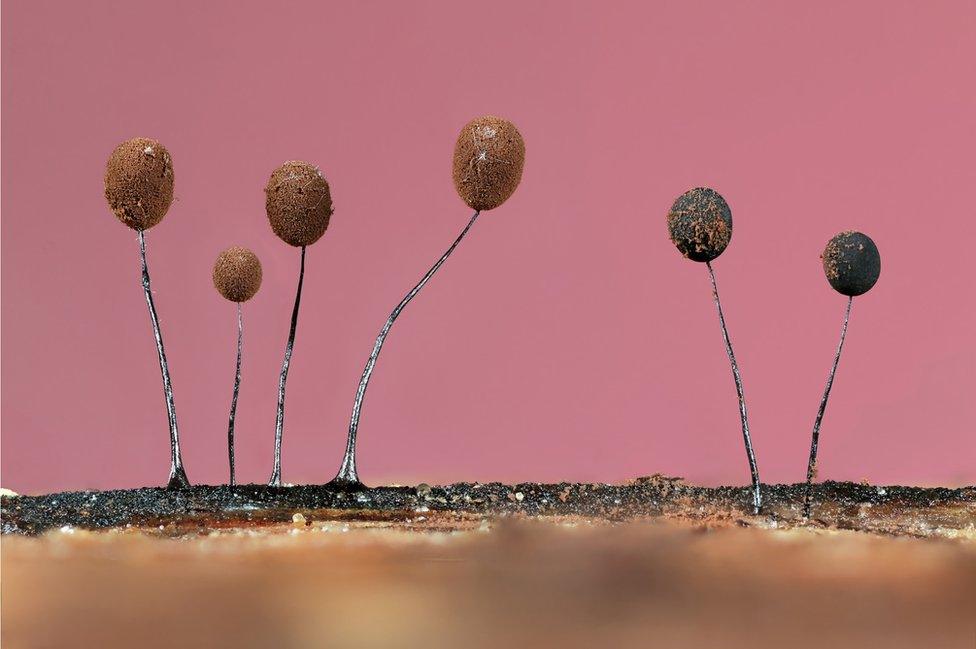
The beauty of slime mould is revealed in a picture by Jason McCombe, who won the Botanical Britain category.
"The world of slime moulds is fascinating. They're neither plants nor fungi," says McCombe.
"They're just so small that if you are not looking for them you will simply overlook them. Each head on these fruiting bodies is approximately 1mm wide.
"This image was made using 160 images, each focused on a different area of the scene, then stacked together to create one highly detailed image."

The Habitat category was won by Daniel Valverde Fernandez, who took this picture in Sherwood Pines Forest Park, Nottinghamshire and titled it The Tightrope Walker.
"In this image, you can see a red fox walking along a tree branch at a considerable height from the ground, demonstrating that these animals are true tightrope walkers of nature," says Fernandez.
"The fox is perfectly framed between the branches and its silhouette is subtly highlighted by the sun's rays falling on it."
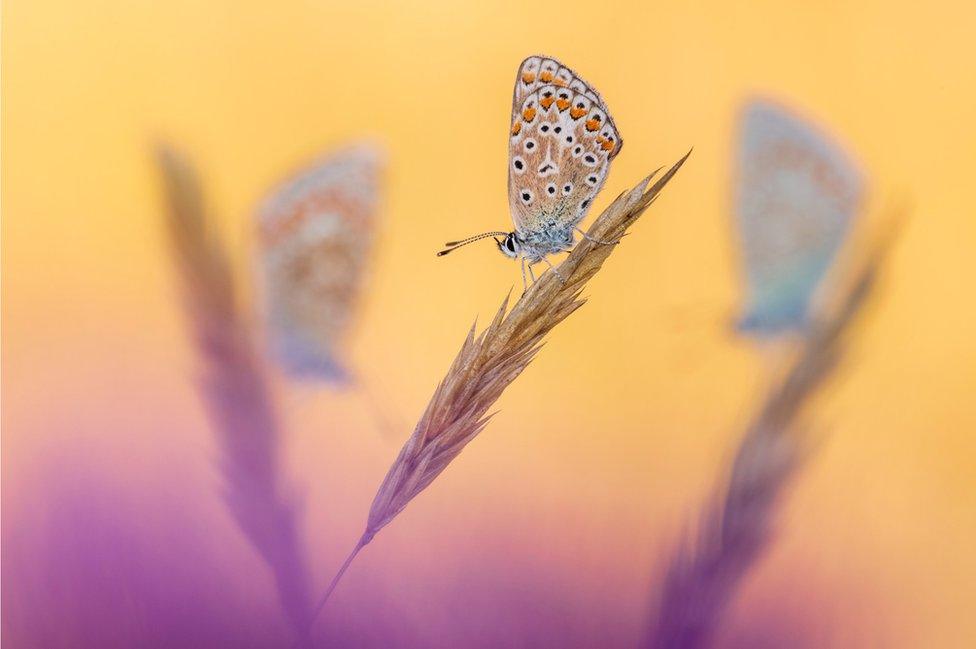
Ross Hoddinott photographed these common blue butterflies on a farm in Devon to win the Hidden Britain category.
"I think I have a slight addiction to photographing blue butterflies - I just love them," says Hoddinott.
"They are such beautiful little insects, and they enhance any wildflower meadow or garden they inhabit. Blues are quite social insects, and they can often be found roosting quite close together - or even on the same grass or flower. I found a dozen or so blues all resting close together one evening last summer."
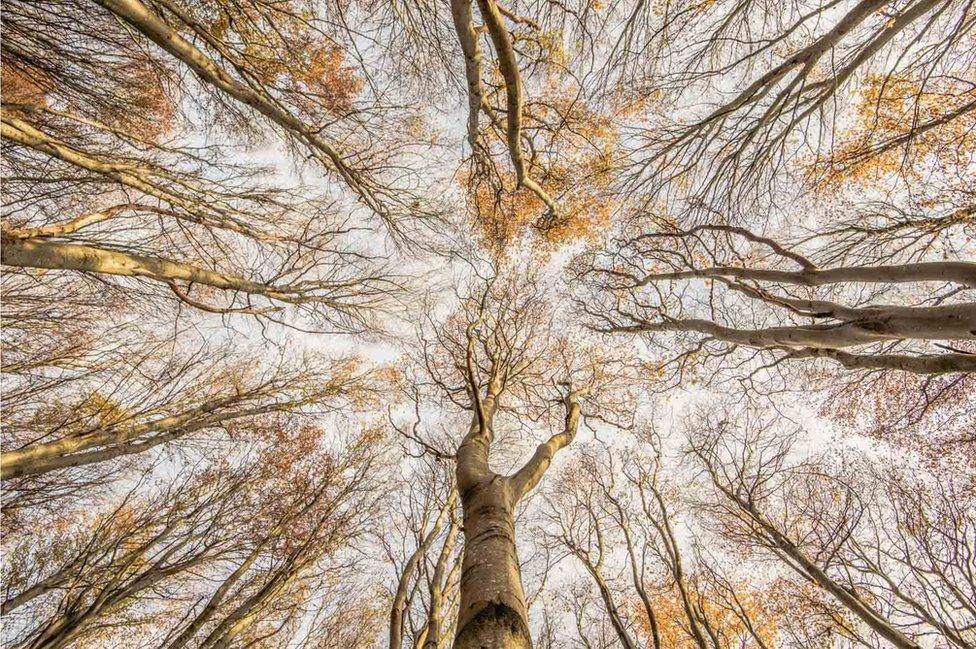
Graham Niven's picture of beech trees in East Lothian won the Wild Woods category.
"When the leaves are almost gone, the branches show their 'canopy shyness' - a phenomenon observed in many species of trees in which the crowns of mature trees do not touch each other," says Niven.
"In doing so, the trees form a canopy that has channel-like gaps which, when photographed from below, appear to create an intricate network of channels between the respective canopies.
"Besides the wondrous vision you are afforded, it's also just a great excuse to lie down in the forest."
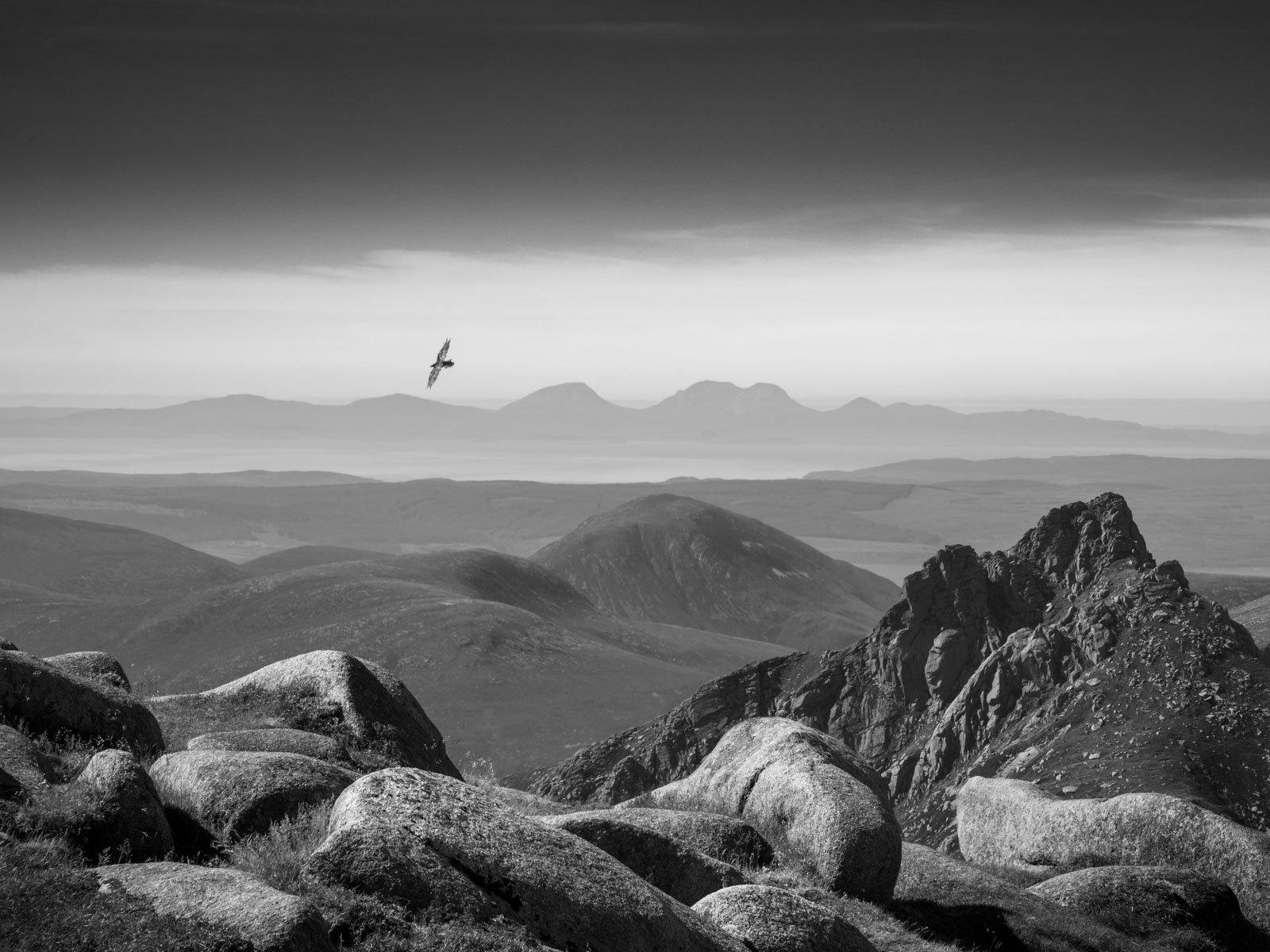
Robin Dodd captured a picture of a raven flying over the Isle of Arran to win the Black and White category.
"This is a shot from the top of Goatfell on the Isle of Arran, which is the highest mountain on the island," says Dodd.
"It was a lovely hike to the top on a bright summer afternoon after arriving by ferry a few hours before. When we reached the summit, it was deserted except for two ravens who seemed to dominate the peak.
"We sat for some time, observing these birds gliding over Arran just as gracefully as any bird of prey.
"It's a harsh yet beautiful world they inhabit. This image is in black and white and consists of two shots, focus-stacked."
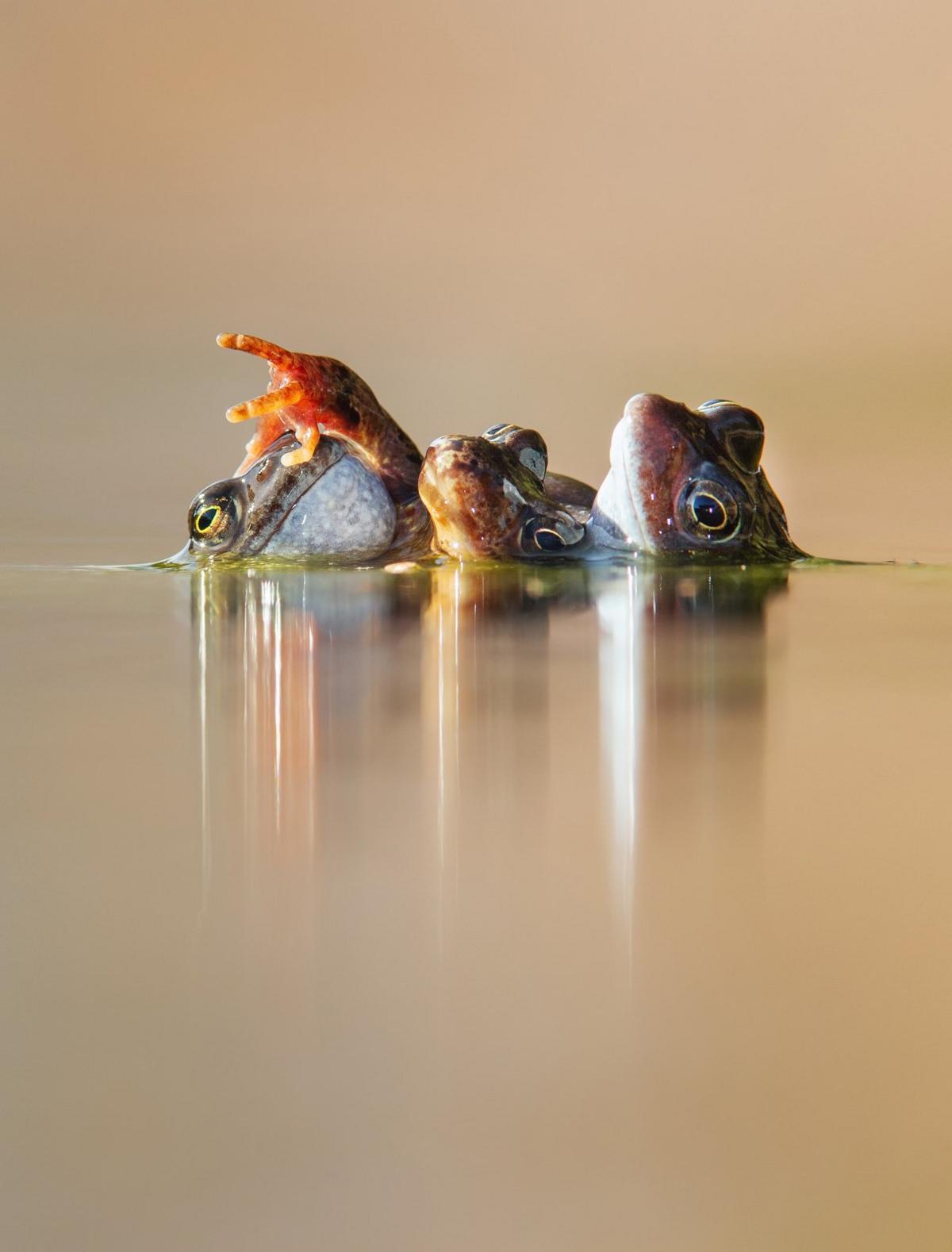
The Animal Behaviour category was won by Ian Mason with this picture titled Three Frogs in Amplexus.
"Every March, our garden ponds suddenly come alive with hundreds of frogs that seem to appear overnight from nowhere," says Mason.
"I have been photographing them for many years, and I am always fascinated and amused by their antics.
"Here, there has been a competition to mate with a female. For a lot of the time there is a frenzy of activity, but sometimes they freeze long enough to get a shot. The image is taken with the lens at water level, and the background is a distant larch tree."

A photograph of a fox in Bristol won Simon Withyman the Urban Wildlife category.
"This vixen had taken up residence in an electricity substation after being pushed out of her parental territory," says Withyman.
"The fenced-off area provided her with a quiet place to rest away from the busy city.
"She would often walk along this wall, and I was able to capture this photo through the gaps in the metal fencing, while making the most of some striking lens flare."
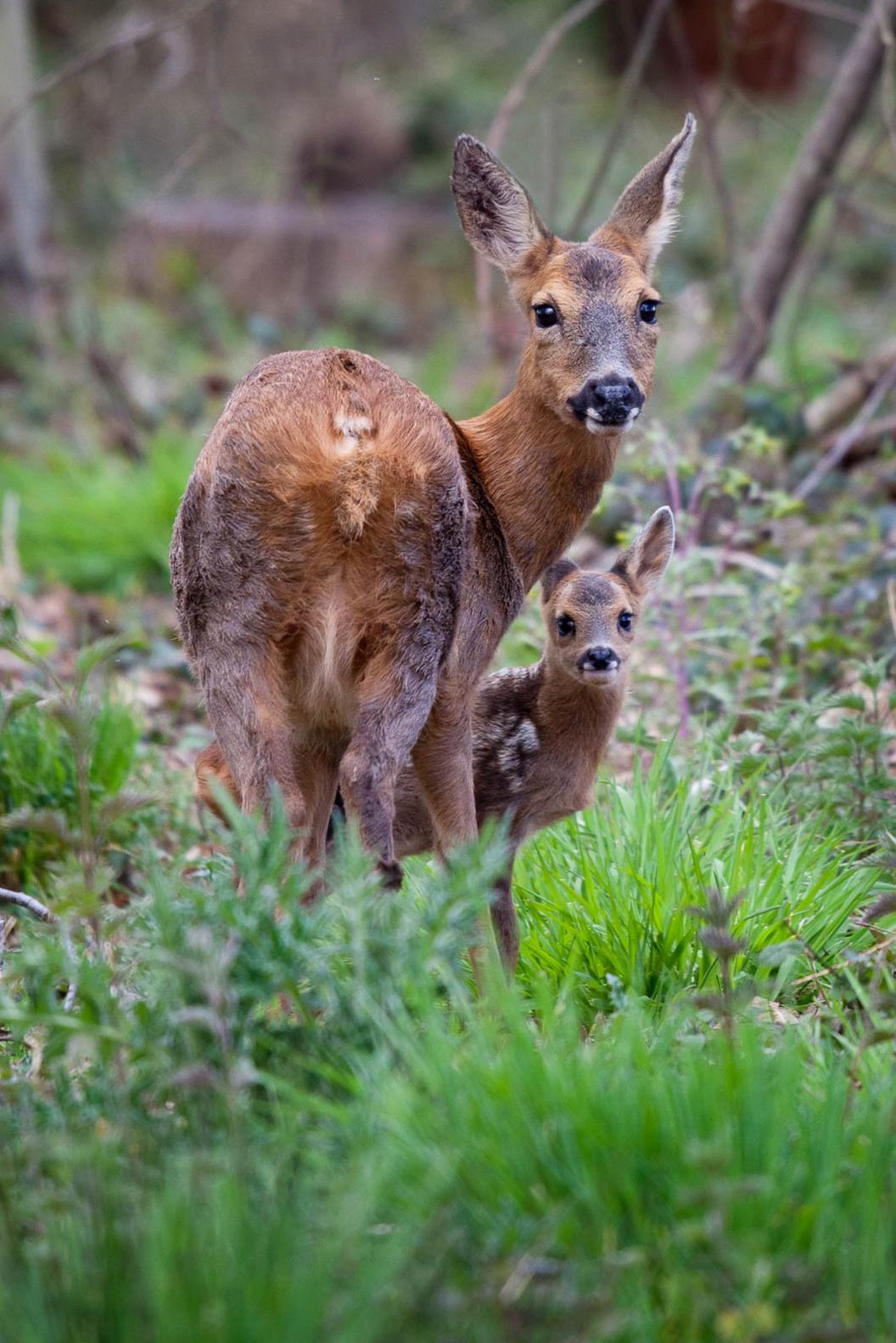
Felix Walker-Nix won the 12-14 years section with this photo of roe deer.
"Walking through the woods, I spotted this roe doe grazing the foliage," says Walker-Nix.
"Slowly, I crept towards her, careful not to startle her.
"To my delight, when she turned round, I saw a small fawn staring back at me.
"Keeping quiet, I raised the camera to take some photos, then swiftly left so I didn't disturb the young fawn and mother any longer. It was an incredible experience to see a 'humbug'-patterned fawn before it loses its spots, and it was a magical experience to get so close."

The 11 and under winner is Jamie Smart with this picture of a pheasant, taken in Wales.
"We got up very, very early one cold (-5°C), misty morning in spring in an effort to try to find some boxing hares up on the moorland," says Smart.
"On our way there, I spotted this pheasant sitting on a farm gate in the morning sunrise.
"I made dad stop the car and reverse slowly, quietly opened my car window and managed to get this photo of the pheasant in all his beauty, with the blackthorn blossom behind him and the sun rays lighting up his copper breast feathers.
"As it happens, we didn't get to see any hares boxing that morning, but Mr Pheasant making this appearance really made up for it."
All photographs courtesy British Wildlife Photography Awards., external